- Главная
- Разное
- Бизнес и предпринимательство
- Образование
- Развлечения
- Государство
- Спорт
- Графика
- Культурология
- Еда и кулинария
- Лингвистика
- Религиоведение
- Черчение
- Физкультура
- ИЗО
- Психология
- Социология
- Английский язык
- Астрономия
- Алгебра
- Биология
- География
- Геометрия
- Детские презентации
- Информатика
- История
- Литература
- Маркетинг
- Математика
- Медицина
- Менеджмент
- Музыка
- МХК
- Немецкий язык
- ОБЖ
- Обществознание
- Окружающий мир
- Педагогика
- Русский язык
- Технология
- Физика
- Философия
- Химия
- Шаблоны, картинки для презентаций
- Экология
- Экономика
- Юриспруденция
Что такое findslide.org?
FindSlide.org - это сайт презентаций, докладов, шаблонов в формате PowerPoint.
Обратная связь
Email: Нажмите что бы посмотреть
Презентация на тему Edgar Degas
Содержание
- 2. Edgar Degas was born in Paris, France
- 3. He returned to Paris in 1859 and
- 4. Woman Seated beside a Vase of Flowers (1865)
- 5. On a visit in 1872 to Louisiana,
- 6. In the early 1870s the female ballet
- 7. The Dance Class (1873-76)He returned to Paris
- 8. Ballet Rehearsal, 1873
- 9. Place de la Concorde (1875)Degas was interested
- 10. L’Absinthe (1876)
- 11. Ballet Rehearsal (1873)Degas liked to paint people
- 12. the Song of the Dog (1875-77)
- 13. Dancers at the Bar (1888)
- 14. Degas was difficult and argumentative, driving away
- 15. The Races. Before the Start (1873)
- 16. The Star (1876-77)Degas frequently left unfinished portions
- 17. At the Races (1877-80)
- 18. Blue Dancers (1898-99)
- 19. Degas also created sculptures, although this is
- 20. Скачать презентацию
- 21. Похожие презентации
Edgar Degas was born in Paris, France on July 19, 1834. He was the eldest of 5 children in a family of aristocrats, and like every privileged child at the time, he was exposed to the

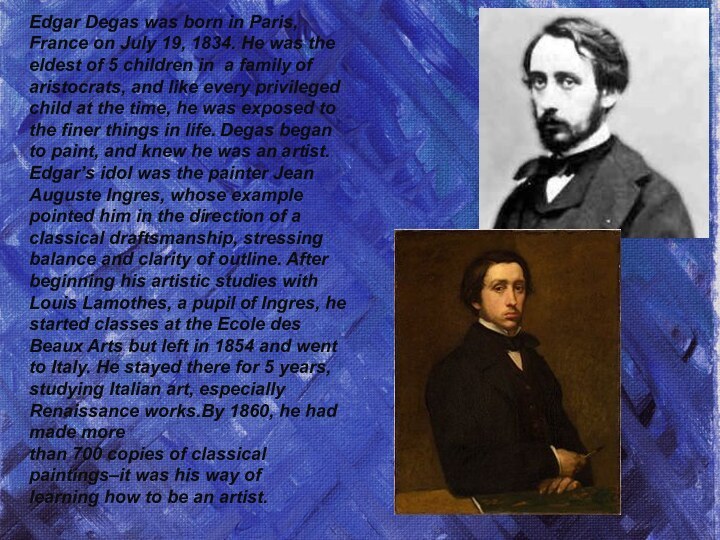
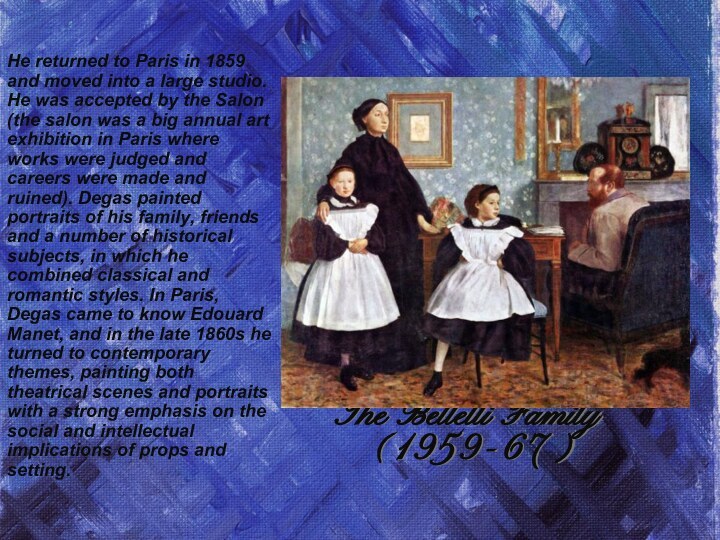
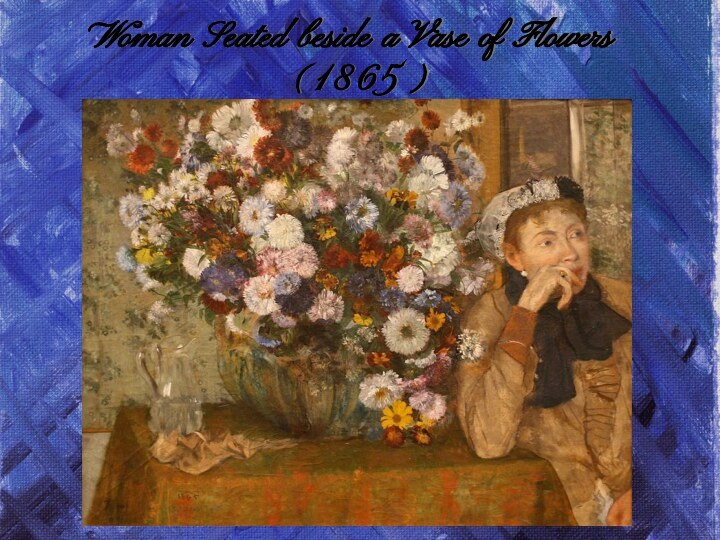

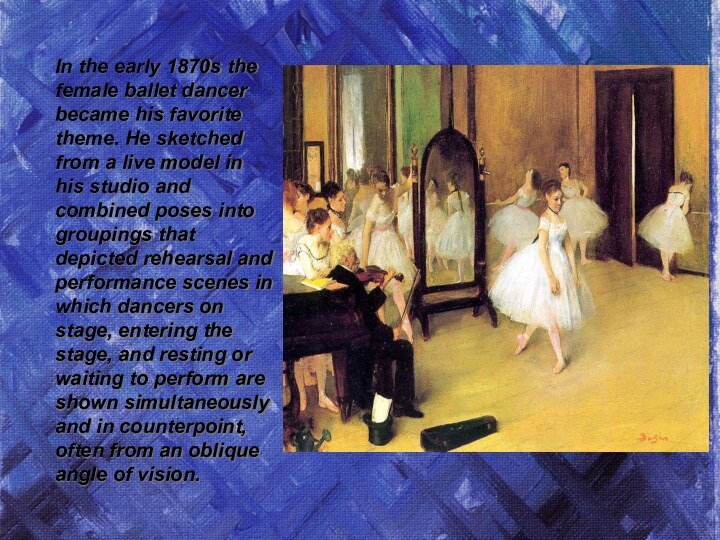
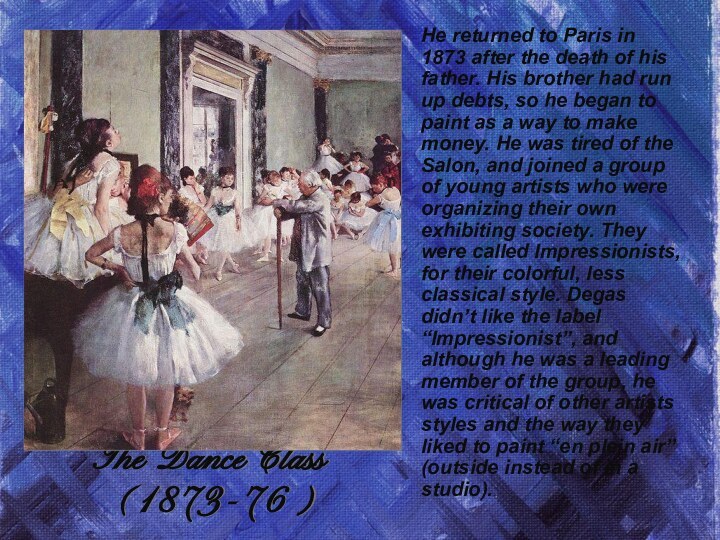
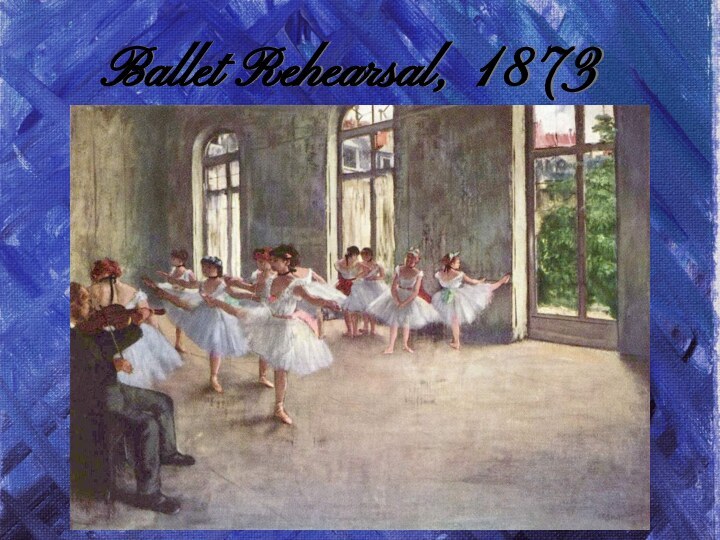
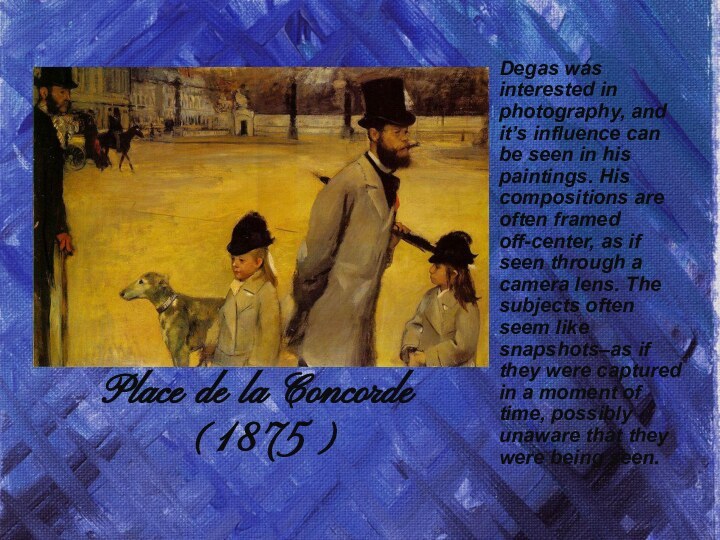
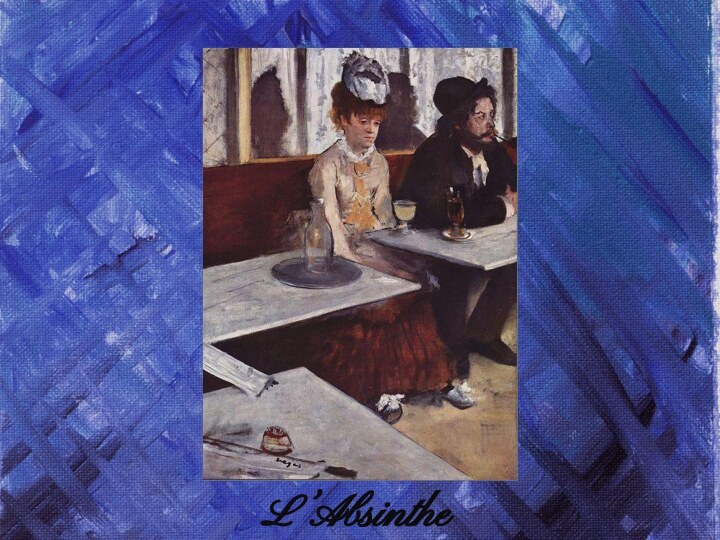

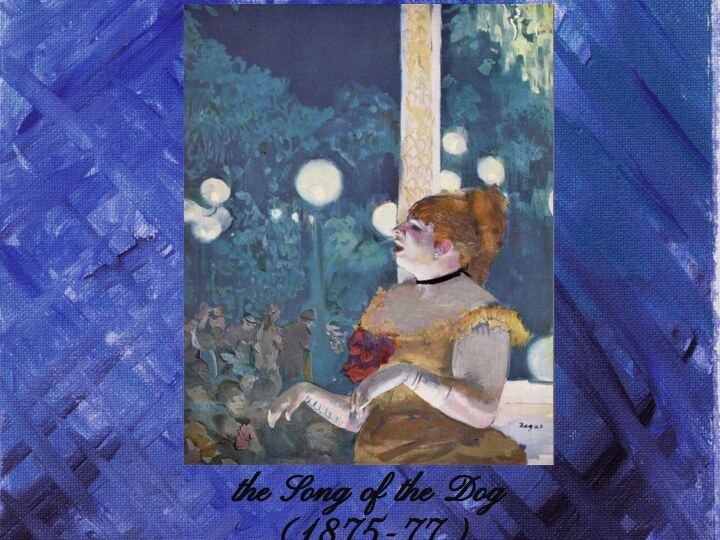
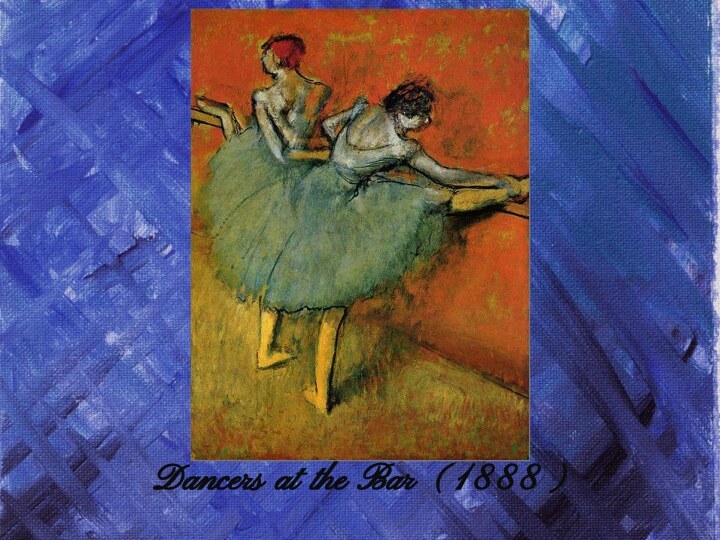
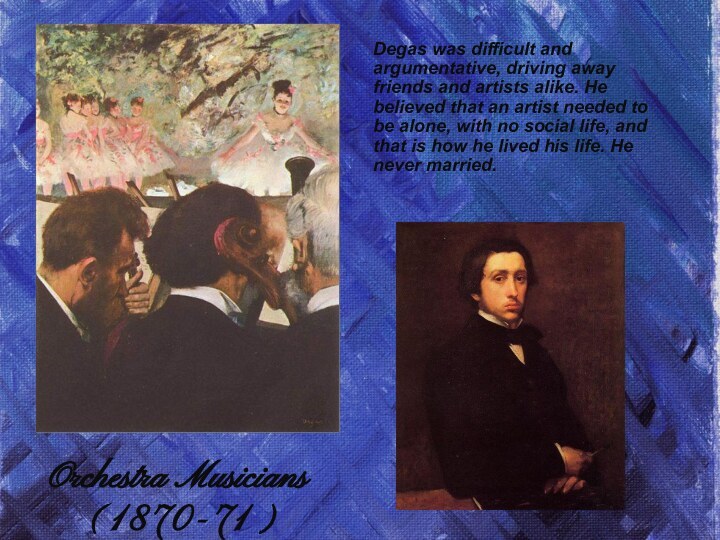
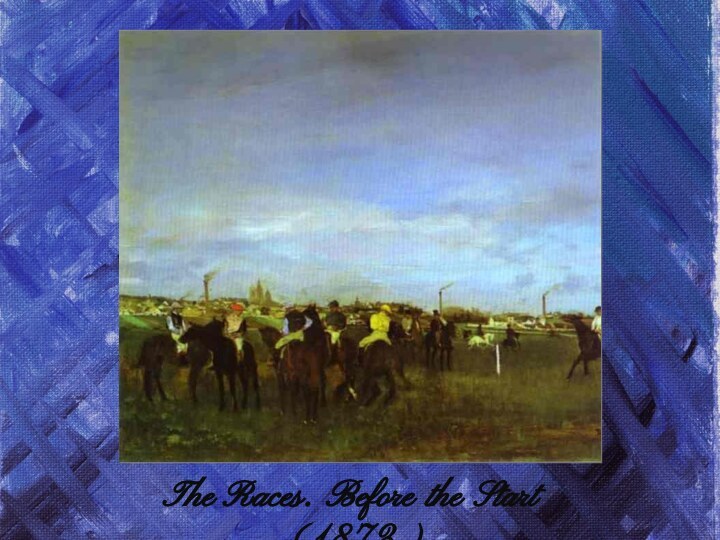
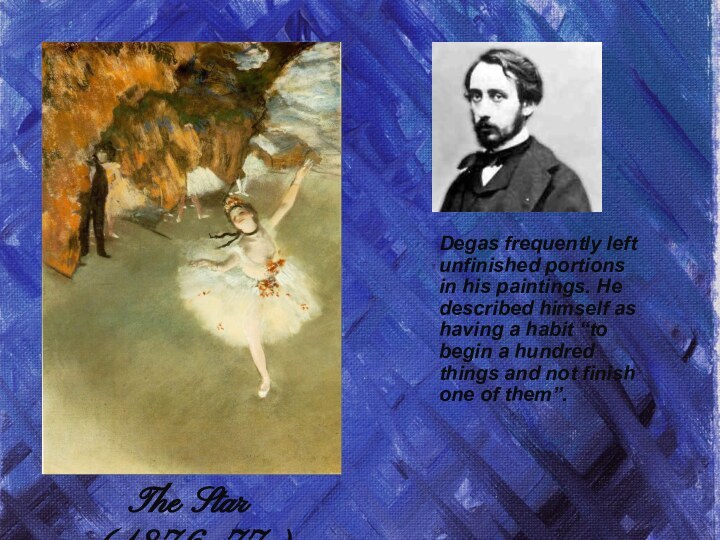
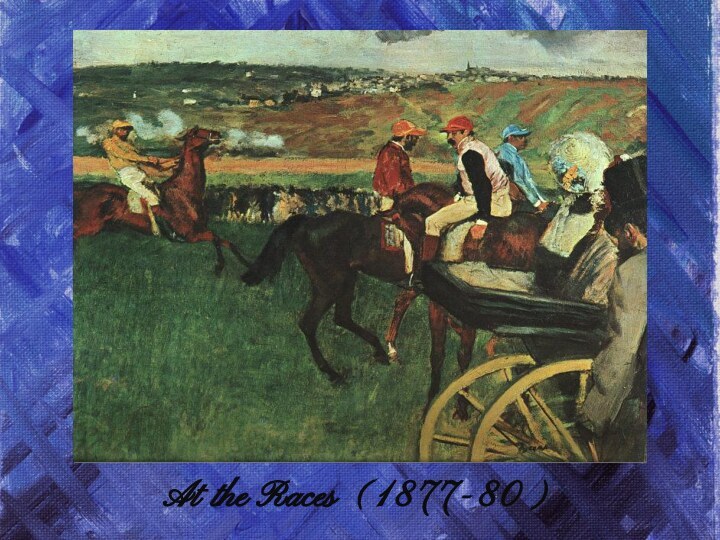
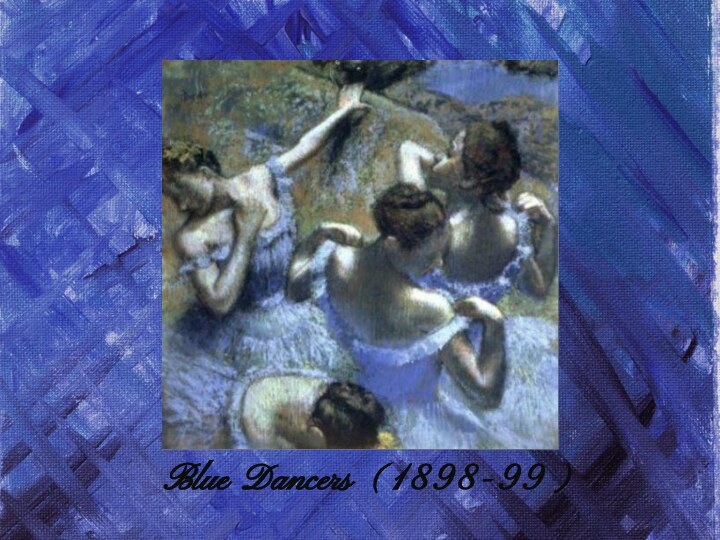
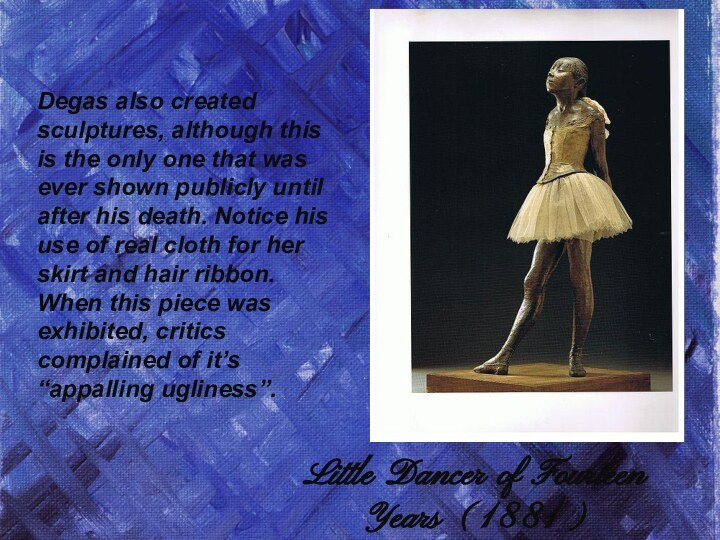
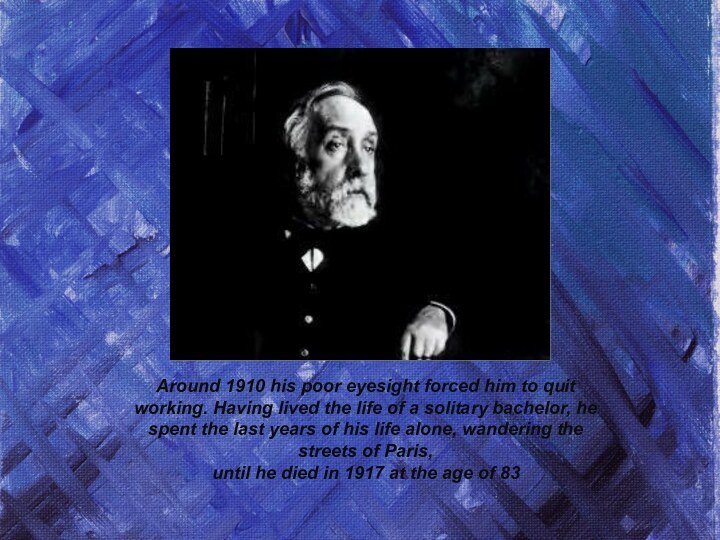
Слайд 3 He returned to Paris in 1859 and moved
into a large studio. He was accepted by the
Salon (the salon was a big annual art exhibition in Paris where works were judged and careers were made and ruined). Degas painted portraits of his family, friends and a number of historical subjects, in which he combined classical and romantic styles. In Paris, Degas came to know Edouard Manet, and in the late 1860s he turned to contemporary themes, painting both theatrical scenes and portraits with a strong emphasis on the social and intellectual implications of props and setting.The Bellelli Family (1959-67)
Слайд 5 On a visit in 1872 to Louisiana, where
he had relatives in the cotton business, he painted
The Cotton Exchange at New Orleans (finished 1873; Musée Municipal, Pau, France), his only picture to be acquired by a museum in his lifetime. Other subjects from this period include the racetrack, the beach, and cafe interiors.The New Orleans Cotton Exchange (1873)
Слайд 6 In the early 1870s the female ballet dancer
became his favorite theme. He sketched from a live
model in his studio and combined poses into groupings that depicted rehearsal and performance scenes in which dancers on stage, entering the stage, and resting or waiting to perform are shown simultaneously and in counterpoint, often from an oblique angle of vision.
Слайд 7
The Dance Class (1873-76)
He returned to Paris in
1873 after the death of his father. His brother
had run up debts, so he began to paint as a way to make money. He was tired of the Salon, and joined a group of young artists who were organizing their own exhibiting society. They were called Impressionists, for their colorful, less classical style. Degas didn’t like the label “Impressionist”, and although he was a leading member of the group, he was critical of other artists styles and the way they liked to paint “en plein air” (outside instead of in a studio).
Слайд 9
Place de la Concorde (1875)
Degas was interested in
photography, and it’s influence can be seen in his
paintings. His compositions are often framed off-center, as if seen through a camera lens. The subjects often seem like snapshots–as if they were captured in a moment of time, possibly unaware that they were being seen.
Слайд 11
Ballet Rehearsal (1873)
Degas liked to paint people at
work, and painted hat makers, laundresses, & especially ballet
dancers. Most often he shows them backstage or in a rehearsal, showing the “work” part of dancing. He was a master at using physical cues–body language, manner of dress, posture– as well as social status or kind of job they are doing– to help us draw conclusions about them.Stage Rehearsal, 1878–1879
Слайд 14 Degas was difficult and argumentative, driving away friends
and artists alike. He believed that an artist needed
to be alone, with no social life, and that is how he lived his life. He never married.Orchestra Musicians (1870-71)
Слайд 16
The Star (1876-77)
Degas frequently left unfinished portions in
his paintings. He described himself as having a habit
“to begin a hundred things and not finish one of them”.Слайд 19 Degas also created sculptures, although this is the
only one that was ever shown publicly until after
his death. Notice his use of real cloth for her skirt and hair ribbon. When this piece was exhibited, critics complained of it’s “appalling ugliness”.Little Dancer of Fourteen Years (1881)





























